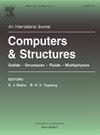Harmonic-modal hybrid frequency approach for parameterized non-linear dynamics
Abstract
Structural dynamics systems are represented by discretized partial differential equations, whose solutions depend on various parameters. Developing high-fidelity numerical models for multi-dimensional systems or those with multiple parameters can be computationally expensive, particularly if the systems are non-linear. Consequently, the concept of a precalculated library of the system's response to a wide range of parameters is appealing. Thus, a global non-linear space-frequency solver is proposed that produces a low-rank representation of the solution using Modal Basis analysis known as the Harmonic Modal Hybrid Method. The DEIM is also used to accelerate its convergence by creating a reduced basis of the non-linear function(s) based on either calculated or experimental values. The optimized solver is then employed for rapid offline computations to construct surrogate models that can give real-time predictions of the parametrized dynamic response using the sPGD technique. These models serve as building blocks for virtual twins that necessitate near-instantaneous calculations when the system parameters and/or conditions are changed. A proof of concept is illustrated by using this technique to analyze a well-known non-linear system, the cantilevered beam with a non-linear cubic spring attached to its end. This method can be easily extended to solve other dynamical systems quickly and effectively.

 求助内容:
求助内容: 应助结果提醒方式:
应助结果提醒方式:


